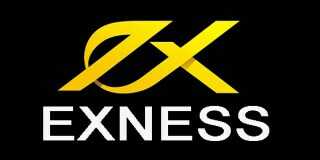Reading Price Charts Bar by Bar
Reading Price Charts Bar by Bar- Với cuốn sách này, Brooks-một chuyên gia phân tích kỹ thuật cho tạp chí Futures và độc lập kinh doanh-trình bày cách áp dụng phân tích biến động giá để vạch ra mô hình có thể giúp nâng cao lợi nhuận và giảm thiểu rủi ro giảm giá.
Trên đường đi, bạn sẽ khám phá ra tầm quan trọng của sự hiểu biết mỗi thanh trên một biểu đồ giá cả, tại sao mô hình đặc biệt là các thiết lập đáng tin cậy cho các ngành nghề, và làm thế nào để xác định vị trí các điểm nhập cảnh, xuất cảnh các thị trường đang kinh doanh trong thời gian thực.
 Trong suốt các cuốn sách này, một số trong những công cụ hữu ích nhất cho việc giải mã hành động giá được trình bày chi tiết, bao gồm:
Trong suốt các cuốn sách này, một số trong những công cụ hữu ích nhất cho việc giải mã hành động giá được trình bày chi tiết, bao gồm:
-
- Trendlines and trend channel lines
- Prior highs and lows
- Breakouts and failed breakouts
- The size of bodies and tails on candles
- The relationship between current bars to prior bars
- And much more
Học những gì thị trường là nói cho bạn có thể khó khăn, nhưng với cách tiếp cận đúng, bạn có thể đạt được mục tiêu này và nắm bắt lợi nhuận phù hợp trong quá trình này.Reading Price Charts Bar by Bar có tất cả các thông tin bạn cần để thành công trong nỗ lực này và sẽ đặt bạn ở vị trí tốt nhất có thể để làm cho hầu hết thời gian của bạn trong thị trường đầy biến động hiện nay.
Mục lục cuốn sách
Chapter 1. Price Action.
Trend Bars and Doji Bars.
Bar Basics: Signal Bars, Entry Bars, Setups, and Candle Patterns.
Signal Bars: Reversal Bars.
Signal Bars: Other Types.
Outside Bars.
The Importance of the Close of the Bar.
Exchange Traded Funds (ETFs) and Inverse Charts.
Second Entries.
Late and Missed Entries.
Chapter 2. Trendlines and Trend Channels.
Trendlines.
Micro Trendlines: Small, Steep Trendlines in Strong Trends.
Horizontal Lines: Swing Points and Other Key Price Levels.
Trend Channel Lines.
Dueling Lines: Intersecting Trendline and Trend Channel Line.
Chapter 3. Trends.
Two Legs.
Signs of Strength.
Common Trend Patterns.
Trend from the Open.
Reversal Day.
Trend Resumption Day.
Trending Trading Range Days.
Tight Channels and Spike and Channel Bull or Bear.
Stairs: Broad Channel Trend.
Chapter 4. Pullbacks.
First Pullback Sequence: Bar, Minor Trendline, EMA, EMA Gap, Major Trendline.
Double Top Bear Flags and Double Bottom Bull Flags.
EMA and Gap EMA Pullbacks.
2 HM: If Away from EMA for Two or More Hours, Then Fade EMA and First EMA Gap Bar.
Trend Day 11:30 Stop Run Pullback to Trap You Out.
Counting the Legs of a Trend.
High/Low 1, 2, 3, and 4.
Variations of High/Low 2 Setups.
Three Push Pullbacks.
Chapter 5. Trading Ranges.
Tight Trading Ranges.
Barb Wire.
Middle of the Day, Middle of the Range.
Big Up, Big Down.
Trading Ranges Setting Up Trend Reversals.
Chapter 6. Breakouts.
Breakout Entries in Strong Trend.
Breakout Pullbacks and Breakout Tests.
Chapter 7. Magnets.
Measured Moves Based on the First Pullback (AB=CD).
Measured Moves on Breakouts based on Thin Areas and on Flags.
Reversals Often End at Signal Bars from Prior Failed Reversals.
Other Price Magnets.
Chapter 8. Trend Reversals.
Trendline Break.
Trend Channel Line Failed Breakouts: Climaxes, Parabolas, and V Tops and Bottoms.
Signs of Strength in the First Leg of a Reversal.
Trends Reverse With a Test: Either an Undershoot or an Overshoot.
Double Top and Bottom Pullbacks.
Climax: Spike and Trading Range Reversals.
Climax: Three Pushes and Wedges (Trend Channel Line Overshoots and Reversals).
Expanding Triangles.
Chapter 9. Minor Reversals: Failures.
Failed Signal and Entry Bars and One-Tick Failed Breakouts.
Failed High/Low 2.
Failed Higher High and Lower Low Breakouts.
Failed Trendlines and Trend Channel Lines.
Failed Reversals.
Failed Final Flags: Tight Trading Range.
Failed Final Flags: Huge Trend Bar.
Failed Wedges.
Failed Scalps: Five-Tick Failed Breakouts and Failure to Reach a Scalper’s Profit Target.
Chapter 10. Day Trading.
Selecting a Market.
Time Frames and Chart Types.
Globex, Pre-Market, Post-Market, and Overnight Market.
Scalping, Swinging, Trading, and Investing.
Always In the Market.
Have at Least Two Reasons to Enter a Trade.
Entering on Stops.
Protective Stops and Getting Trapped In or Out of a Trade.
Chapter 11. The First Hour.
Patterns Related to the Premarket.
Patterns Related to Yesterday.
Trend Bar on Gap Open: First or Second Bar.
Gap Openings: Reversals and Continuations.
Trend from the Open or Trend from the First Bar.
Third Bar of the Day and the 15-Minute Close.
Strong Trend Bars in the First Hour Often Predict Strength Later in the Day in the Same Direction.
Opening Patterns and Reversals.
Double Bottom and Double Top Flags.
Trading Range Breakouts.
First Pullback.
Chapter 12. Detailed Day Trading Examples.
Chapter 13. Daily, Weekly, and Monthly Charts.
Huge Volume Reversals.
Chapter 14. Options.
Chapter 15. Best Trades.
Major Reversals.
Minor Reversal Scalps during Trading Range Days.
Pullbacks in a Strong Trend.
Intraday Stocks.
Trading Guidelines.
Glossary.
About the Author.
Index.















